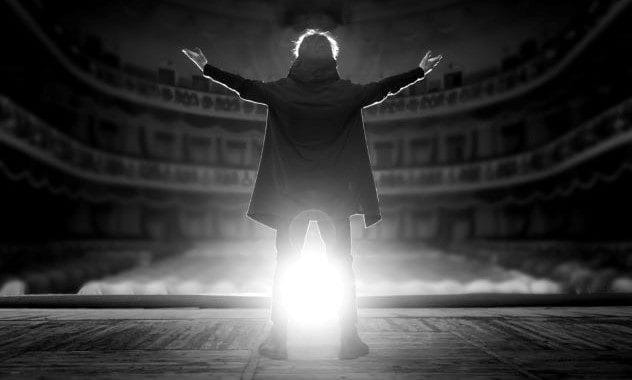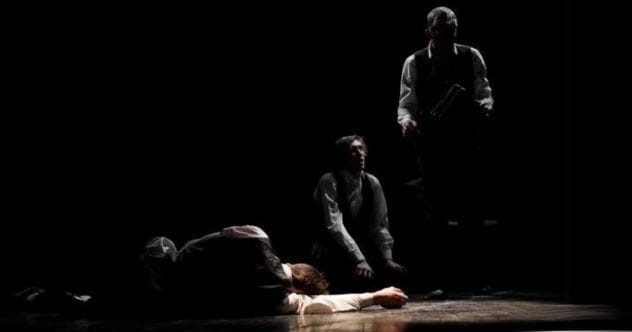The stage is a place of passion, drama, and sometimes, unforeseen tragedy. While most performances end with applause and curtain calls, some conclude in the most abrupt and heartbreaking way possible. We often hear about well-known incidents like Tommy Cooper’s onstage collapse or Brandon Lee’s accidental shooting during filming. But, the history of performance is marked by numerous lesser-known individuals who met their end in the midst of their art. These stories, spanning centuries, remind us of the fragility of life.
From sudden heart attacks to fatal accidents, these performers’ final acts serve as poignant reminders that the curtain call of life can come at any moment. Let’s explore ten such tragic instances.
“Dimebag” Darrell Abbott
One of the most shocking deaths during a performance was that of heavy metal guitarist “Dimebag” Darrell Abbott. On December 8, 2004, less than two minutes into a Damageplan show in Columbus, Ohio, Abbott was fatally shot in the head by a disturbed fan, Nathan Gale.
Gale entered the venue through a side door and made his way directly to the stage, where he targeted Abbott. The ensuing chaos resulted in the deaths of a road crew member, a club employee, and another audience member. A police officer on the scene eventually shot and killed Gale as he held a hostage at gunpoint.
Gale’s history of mental health issues and his delusion that the band had stolen his songs were later revealed.[1]
Colonel Bruce Hampton
Though not as violent, the death of Colonel Bruce Hampton was equally unsettling for those who witnessed it. During his 70th birthday celebration at the Fox Theatre in Atlanta on April 30, 2017, Hampton collapsed while performing “Turn on Your Lovelight.”
Initially, the other musicians continued playing, believing it was part of a comedic stunt. Many in the audience even laughed. However, when Hampton remained motionless, they realized the tragic reality: he had suffered a massive heart attack.
Photographer Michael Weintrob, who was present, recounted that “at first everyone thought he was messing around. But he was dying while everyone else was playing.”[2]
Jon-Erik Hexum
The death of actor Jon-Erik Hexum is particularly tragic because it was a preventable accident born out of on-set boredom. In 1984, the 26-year-old actor was filming a scene for the CBS show, Cover Up. The scene involved a .44 Magnum loaded with a blank bullet.
Facing delays, Hexum began toying with the gun, spinning the chamber in a manner akin to Russian roulette. Unbeknownst to him, a wad of paper was lodged in the barrel. When he jokingly put the gun to his head and pulled the trigger, the paper’s expulsion fractured his skull, sending a bone fragment into his brain. He was kept on life support but declared brain dead less than a week later.[3]
Joe E. Ross
Joe E. Ross, renowned for his role in Car 54, Where Are You?, died during a performance at a clubhouse in his apartment building in Van Nuys, Los Angeles, in August 1982. The 67-year-old comedian suffered a fatal heart attack onstage.
Despite remaining active in television, Ross frequented the club scene in his later years. Thought to be in relatively good health, his sudden death shocked his family and friends, many of whom were in attendance.[4]
Karl Wallenda
Karl Wallenda, the famed acrobatic tightrope walker, tragically fell to his death in San Juan, Puerto Rico, in 1978. The event was captured by a local news crew and witnessed by 200 people. Attempting to walk a tightrope 120 feet above ground between two towers of the Condado Plaza Hotel, the 73-year-old lost his balance.
He struck a parked taxi on his way down, which likely contributed to his death. It is believed that improperly secured wires and high winds caused the accident. The footage, while disturbing, has been shown on various media outlets.[5]
Leonard Warren
Opera star Leonard Warren’s death was particularly grim due to the line he sang just moments before collapsing. During a performance of Giuseppe Verdi’s La Forza Del Destino in March 1960, Warren sang, “…to die, a momentous thing.” He was then meant to continue the performance with the rest of the cast.
Some recalled Warren gasping, “Help me, help me!” before collapsing on stage during the sold-out performance, while others only noted a gasp as he struggled for breath.
Fellow cast members rushed to help, but Warren was already dead from a heart attack. His death caused significant disruption, requiring numerous shows to be recast.[6]
Gilbert Genesta
Magicians and illusionists are aware of the risks involved in their craft. In November 1930, American escape artist Gilbert Genesta attempted Houdini’s water-filled barrel escape, but this time it went tragically wrong.
Performing in Frankfort, Kentucky, Genesta had successfully completed the stunt many times before. However, the metal milk barrel he used that night had a small dent, restricting his movements and preventing his escape.
Stage assistants quickly intervened, dropping the curtain as they pulled Genesta out unconscious but barely alive. Despite initial resuscitation, he died shortly after. Ironically, his death increased the popularity of such escape acts.[7]
Thomas Macarte
The death of Thomas Macarte might evoke mixed reactions. In January 1872, the lion tamer was performing in Bolton, UK, inside a cage with five lions before approximately 500 spectators. Suddenly, the lions turned on him, mauling him to death.
Macarte’s wife revealed that one of the lions had bitten his hand days earlier, causing him to fear it. He had also reportedly consumed alcohol to calm his nerves before the show. Whether these factors contributed to the incident or the lions simply “snapped” after years of treatment remains debated.[8]
Molière
One of the earliest recorded onstage deaths is that of Molière (Jean-Baptiste Poquelin), the renowned French writer and actor, in February 1673.
Molière collapsed twice during a performance but insisted on continuing despite coughing fits and breathlessness. Shortly after, he collapsed again with severe bleeding. He was taken home, where he died soon after. He was awaiting last rites, but a delay in the arrival of a third priest meant the sacrament was not administered in time.
Molière was wearing green during his final performance, which is said to be the origin of the superstition that the color brings bad luck to actors.[9]
“Mr. Cummins”

In 1817, an actor known only as “Mr. Cummins” died at the Leeds Theatre in Hunslet during a performance of The Tragedy of Jane Shore. The story is still recounted among actors in the UK theatre scene.
The play centers on a husband (Cummins) who forgives his wife after her repentance. After delivering his final line, Cummins collapsed and died on stage, likely from heart failure.
Whether he felt unwell before or during the performance is unknown, but Cummins, like many actors, believed that “the show must go on.”[10]
These ten stories, each filled with its own unique circumstances and dramatic irony, remind us of the unpredictable nature of life and the dedication of performers who live by the mantra, “the show must go on,” even to their very last breath.
Which of these stories struck you the most? Share your thoughts in the comments below!










